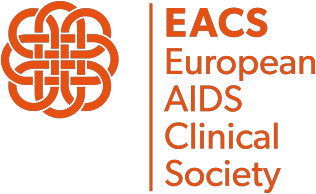Lipodystrophy and Obesity
Lipoatrophy
Prevention
- Avoid d4T and ZDV or pre-emptively switch. No evidence of benefit by switching other antiretrovirals
- Avoid excessive weight loss due to diet and exercise
- In ART-naïve persons, limb fat usually increases with initiation of ART not containing d4T or ZDV, reflecting “return-to-health” type of response
Management
- Modification of ART: Switch away from d4T or ZDV
- Increase in total limb fat ~400-500 g/year (in the first two years)
- Risk of toxicity from new drug, see Adverse Effects of ARVs & Drug Classes
- Surgical intervention
- Offered for cosmetic relief of (facial) lipoatrophy
- Autologous fat (whenever possible) or resorbable facial filler (if autologous fat not available) should be preferred against nonresorbable filler
Lipohypertrophy(i)
Prevention
- No proven strategy
- No contemporary ART has been specifically associated with increased visceral adiposity
- An excess of visceral fat has been reported in people with HIV compared with non-HIV persons for the same BMI (even in the absence of obesity)
- Weight reduction or avoidance of weight gain may decrease visceral fat
- Avoid corticosteroids with RTV or COBI-boosted drugs as it may cause Cushing syndrome or adrenal insufficiency, see Drug-Drug Interactions between Corticosteroids and ARVs
Management
- Diet and exercise may reduce visceral adiposity
– No prospective trials in persons with HIV to indicate degree of diet and/ or exercise needed to reduce visceral fat - Pharmacological interventions to treat lipohypertrophy have not been proven to provide long-term effects
- Surgical therapy can be considered for localised lipomas/buffalo humps
– Duration of effect variable
-
Lipohypertrophy may occur as localised lipomas in the subcutaneous region or as increased visceral adiposity, both intra-abdominally and/or in the epicardium. Lipohypertrophy may occur without obesity.
Increased visceral adiposity is defined by waist circumference:
- for men: ≥ 94 cm (≥ 90 cm for Asian men) is high, and > 102 cm is very high
- for women: ≥ 80 cm is high and > 88 cm is very high
Weight Gain and Obesity
| Weight Gain | Obesity | Comments | |
| Definition | It is a physiological phenomenon associated with aging. Body weight of an average European adult is estimated to increase by 0.3 - 0.5 kg per year. An increase > 5% of weight may be considered to define weight gain potentially associated with insulin resistance |
BMI-based definitions (WHO): For Asian populations, overweight is defined as BMI 23 to 27.5 kg/m2 and obesity ≥ 27.5 kg/m2 |
Weight gain and obesity represent a continuum associated with negative health outcomes |
| Consequences | Increased risk of DM, hypertension, dyslipidemia and CVD | Body image disturbance Increased risk of DM, hypertension, CVD, some cancers, obstructive sleep apnoea, cholecystitis, erectile dysfunction, metabolic dysfunction-associated steatotic liver disease, osteoarthritis, depression and neurocognitive impairment |
|
| Contributing factors |
Older age |
||
| Impact of ART | Initiation of ART increases weight as part of a return-to-health phenomenon INSTI and TAF may induce greater weight gain than other ARVs Switching from INSTI and/or TAF may have a small weight loss effect in overweight/obese people with HIV |
See Adverse effects of ARVs and drug classes | |
| Aim of intervention |
Emphasise the importance of behaviour goals rather than weight loss goals |
||
| Management | Motivation to change: Discuss support systems (e.g. family, friends), motivating factors, and barriers to change Discuss benefits of making changes Set realistic and achievable lifestyle changes |
||
| Lifestyle recommendations | Consider behavioral intervention (motivational interviewing, stimulus control or cognitive restructuring) along with self-monitoring; intensify behavioral intervention if several unsuccessful weight loss attempts | See Lifestyle Interventions | |
| General principles | Treat underlying or associated conditions There are several drugs specifically recommended for those with a BMI ≥ 30 kg/m2 or ≥ 25 kg/m2 and weight-related complications (DM, hypertension) (e.g. orlistat, phentermine/topiramate, lorcaserin, naltrexone/bupropion, liraglutide, semaglutide). These drugs should be prescribed by an endocrinologist or obesity expert. All of them may have adverse effects and drug-drug interactions with ART |
Consider TDM (therapeutic drug monitoring) in PWH with obesity. |
|
| Bariatric surgery | Medical devices or endoscopic procedures (e.g intragastric balloon, aspiration therapy, endoscopic sleeve gastroplasty) or bariatric surgery should be considered in persons with a BMI ≥ 40 kg/m2 or ≥ 35 kg/m2 with obesity-related co-morbidities refractory to serious attempts at lifestyle changes and should be coordinated through an established, specialist-led obesity programme | Bariatric surgery may impact ARVs absorption*. Consider therapeutic drug monitoring and drug dose adjustment post-bariatric surgery |
|
* www.hiv-druginteractions.org/prescribing_resources/hiv-guidance-gastric-surgery
